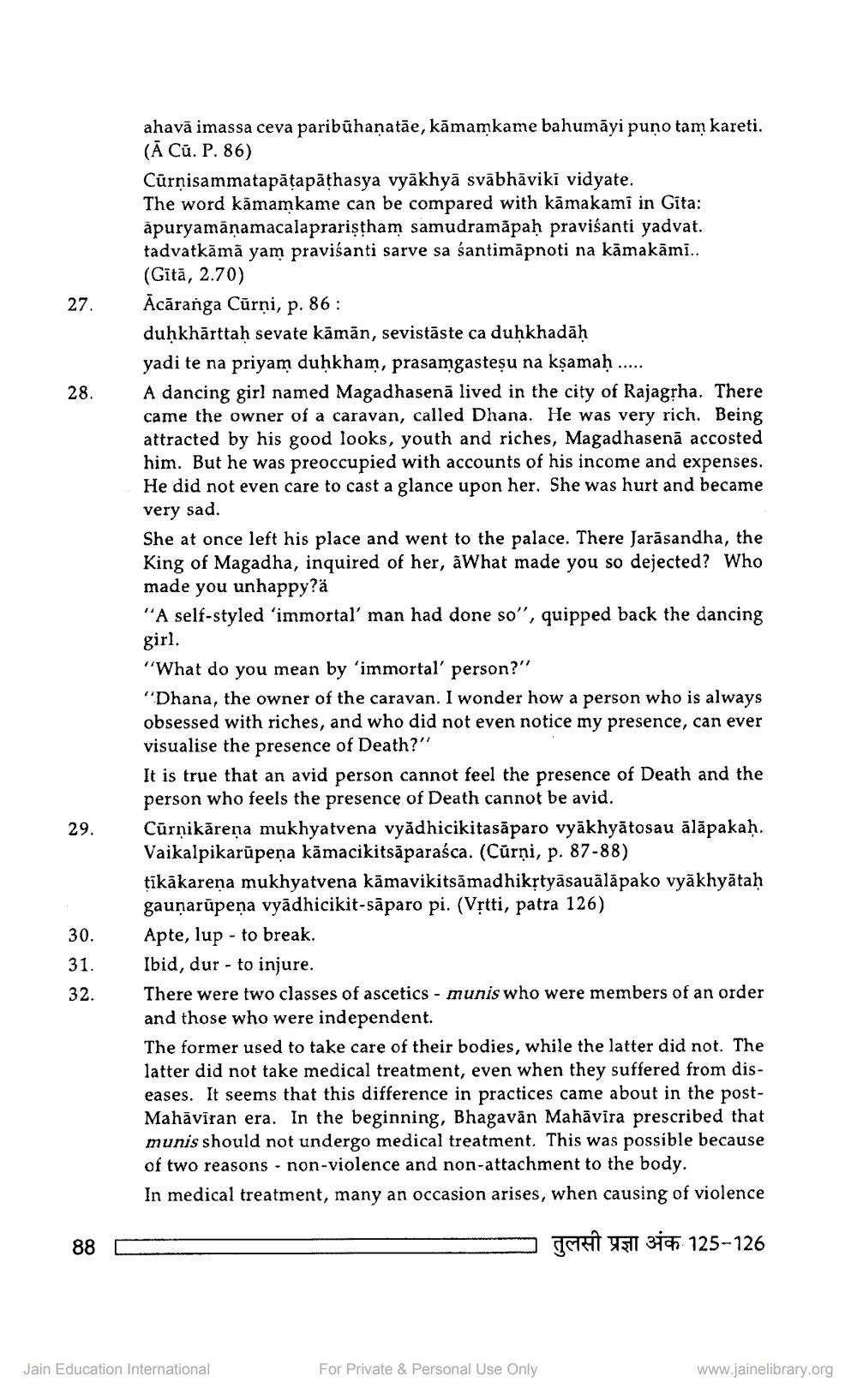________________
27.
28.
29.
30.
31.
32.
888
ahavā imassa ceva paribühaṇatãe, kāmamkame bahumayi puno tam kareti. (Ā Cū. P. 86)
Cūrṇisammatapāṭapāṭhasya vyakhyā svābhāviki vidyate. The word kāmamkame can be compared with kamakami in Gita: apuryamāṇamacalaprariṣṭham samudramapaḥ praviśanti yadvat. tadvatkāmā yam praviśanti sarve sa santimäpnoti na kāmakāmi.. (Gită, 2.70)
Acāranga Cūrņi, p. 86:
duḥkharttaḥ sevate kāmān, sevistaste ca duḥkhadāḥ
yadi te na priyam duḥkham, prasamgasteṣu na kṣamaḥ
A dancing girl named Magadhasenā lived in the city of Rajagṛha. There came the owner of a caravan, called Dhana. He was very rich. Being attracted by his good looks, youth and riches, Magadhasenā accosted him. But he was preoccupied with accounts of his income and expenses. He did not even care to cast a glance upon her. She was hurt and became very sad.
She at once left his place and went to the palace. There Jarasandha, the King of Magadha, inquired of her, äWhat made you so dejected? Who made you unhappy?ä
"A self-styled 'immortal' man had done so", quipped back the dancing girl.
"What do you mean by 'immortal' person?"
"Dhana, the owner of the caravan. I wonder how a person who is always obsessed with riches, and who did not even notice my presence, can ever visualise the presence of Death?"
It is true that an avid person cannot feel the presence of Death and the person who feels the presence of Death cannot be avid.
Cūrṇikāreņa mukhyatvena vyādhicikitasāparo vyākhyātosau ālāpakaḥ. Vaikalpikarupeņa kāmacikitsāparaśca. (Curņi, p. 87-88)
ṭīkākarena mukhyatvena kāmavikitsāmadhikṛtyāsauālāpako vyākhyātaḥ gauṇarüpena vyādhicikit-sāparo pi. (Vṛtti, patra 126)
Apte, lup - to break.
Ibid, dur to injure.
There were two classes of ascetics munis who were members of an order and those who were independent.
The former used to take care of their bodies, while the latter did not. The latter did not take medical treatment, even when they suffered from diseases. It seems that this difference in practices came about in the postMahāvīran era. In the beginning, Bhagavan Mahāvīra prescribed that munis should not undergo medical treatment. This was possible because of two reasons non-violence and non-attachment to the body.
In medical treatment, many an occasion arises, when causing of violence
तुलसी प्रज्ञा अंक 125-126
Jain Education International
For Private & Personal Use Only
www.jainelibrary.org




